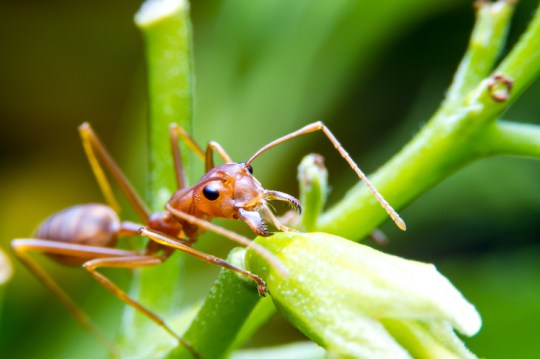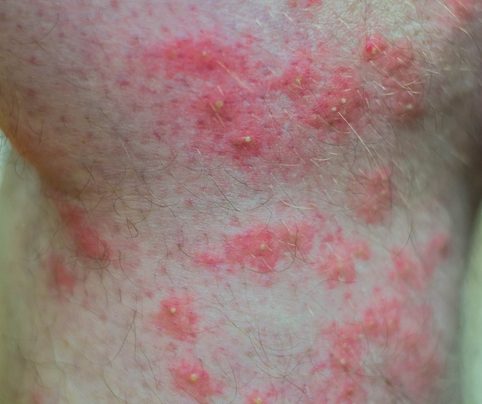One of world’s most feared creatures is heading to Britain, scientists have warned.
The red fire ant, considered one of the most invasive species in the world – and the fifth most costly to combat – has already been introduced and established in Europe, reveals the study.
Its sting – described as ‘painful and irritating – can cause pustules and allergic reactions, and may even trigger potentially deadly anaphylactic shock.
Originally from South America, the red fire ant, also known as Solenopsis invicta, has had a massive impact on ecosystems, agriculture and human health in several countries around the world.
Recently, researchers have identified 88 red fire ant nests spread over five hectares near the city of Syracuse on the Italian island of Sicily.
They say the colonies could have come from China or the US, where it is also an invasive species.
Ecological models developed as part of the study show ‘alarming’ predictions about the colonisation potential of the ant in Europe, which could be aided by climate change.
The invasive species could potentially establish itself across seven per cent of Europe, according to the study published in the journal Current Biology.
In less than a century, the ant has spread across much of the US, Mexico, the Caribbean, China, Taiwan and Australia, and has only been eradicated in New Zealand.
Its presence in the US has caused an estimated loss of more than £5 billion per year, while countries including Australia allocate millions to its eradication, but with little success.
Before the recent study, red fire ants had been found occasionally among imported products in Spain, Holland and Finland, but its establishment on the continent had never been confirmed.
Using genetic analysis, researchers concluded that the population detected on Sicily probably originated in China or the US, but the route of entry is unknown. The colonies are located in a suburban area of the city of Syracuse, Sicily, comprising an estuary and a natural park.
‘It is an isolated area, so it is unlikely that it was the first point of entry to the island,’ said study leader Dr Roger Vila, of Spain’s Institute of Evolutionary Biology (IBE).
The team concluded that the entry point must have been a ‘transit’ area with human activity – such as the commercial port of the city of Syracuse.
Analysis of the wind direction indicate that some flying queen ants could have arrived from the north west, where the port of Syracuse is located and where the team has recommended monitoring for the ants.
‘The results suggest that half of the urban areas in Europe would be climatically suitable for the establishment of this invasive species,’ said Dr Vila.
‘Large cities such as Barcelona, Rome, London or Paris could be considerably affected by this invasive species, which can impact people’s lifestyles due to its abundance and aggressiveness.
‘Mediterranean coastal cities, highly connected by seaports, are the most suitable to S invicta, which could facilitate its spread.
‘Considering climate change predictions, the scenario could become much worse, as the species could potentially expand to other parts of Europe.’
He added: ‘Coordinated efforts for early detection and rapid response in the region are essential to successfully manage this new threat, before it spreads uncontrollably.’
First author Mattia Menchetti said: ‘The public could play a key role in the detection of S invicta, considering that it is frequently found in urban and adjacent areas.
‘It is possible to detect this ants due to its painful stings and the characteristic mounds of their nests, although confirmation of an expert is required.’
The team recommend that monitoring should be extended over a larger geographical area.
MORE : Star Wars boffin creates ‘purple cannon fire’ in real world experiment
MORE : Man caught with bag of snakes hidden down trousers at airport
MORE : Scientists have created a Frankenstein mouse with a part-rat brain
Get your need-to-know
latest news, feel-good stories, analysis and more
This site is protected by reCAPTCHA and the Google Privacy Policy and Terms of Service apply.












